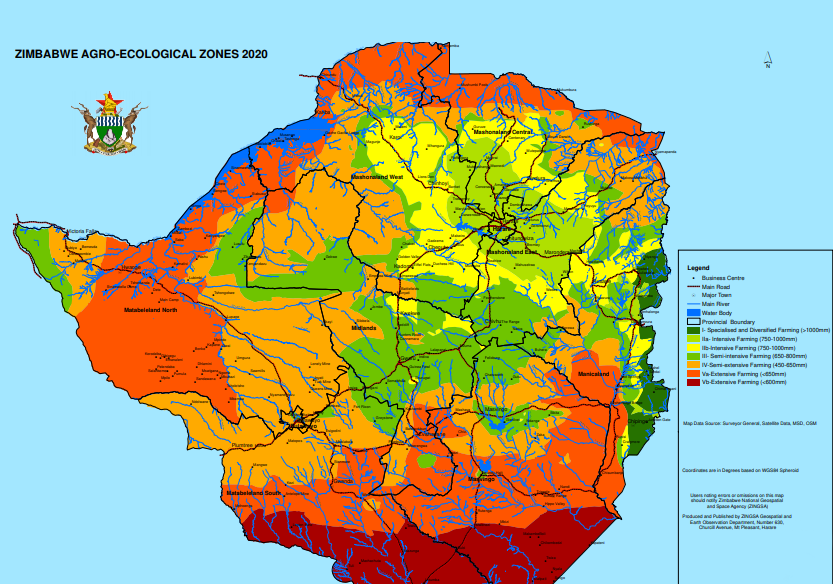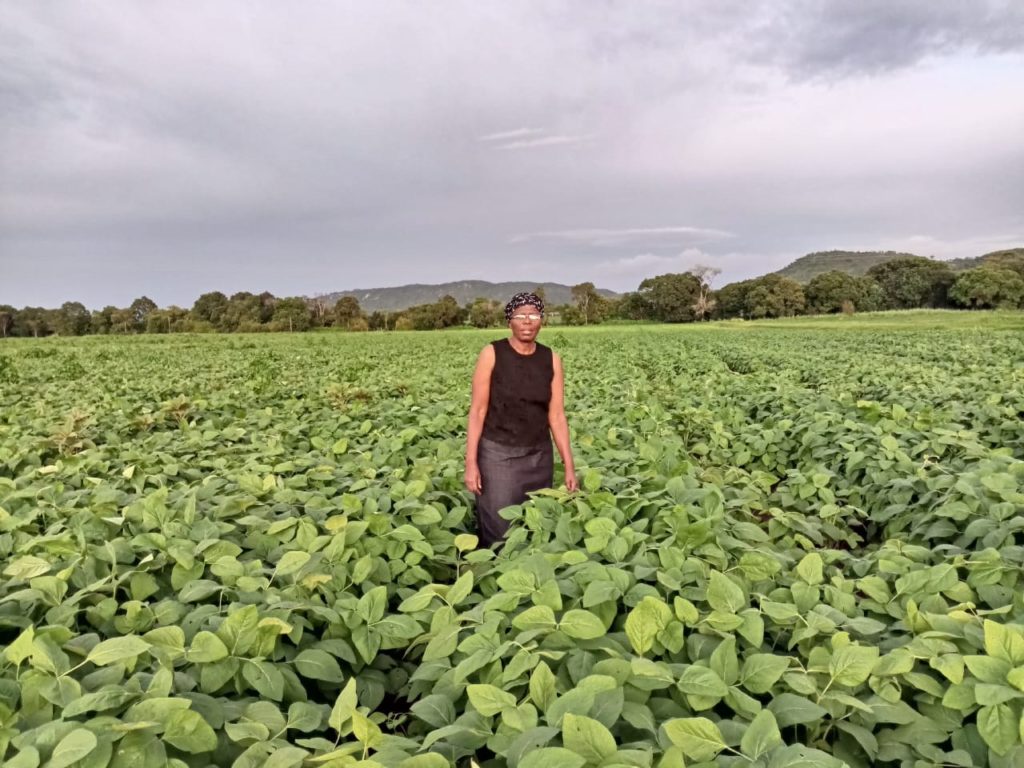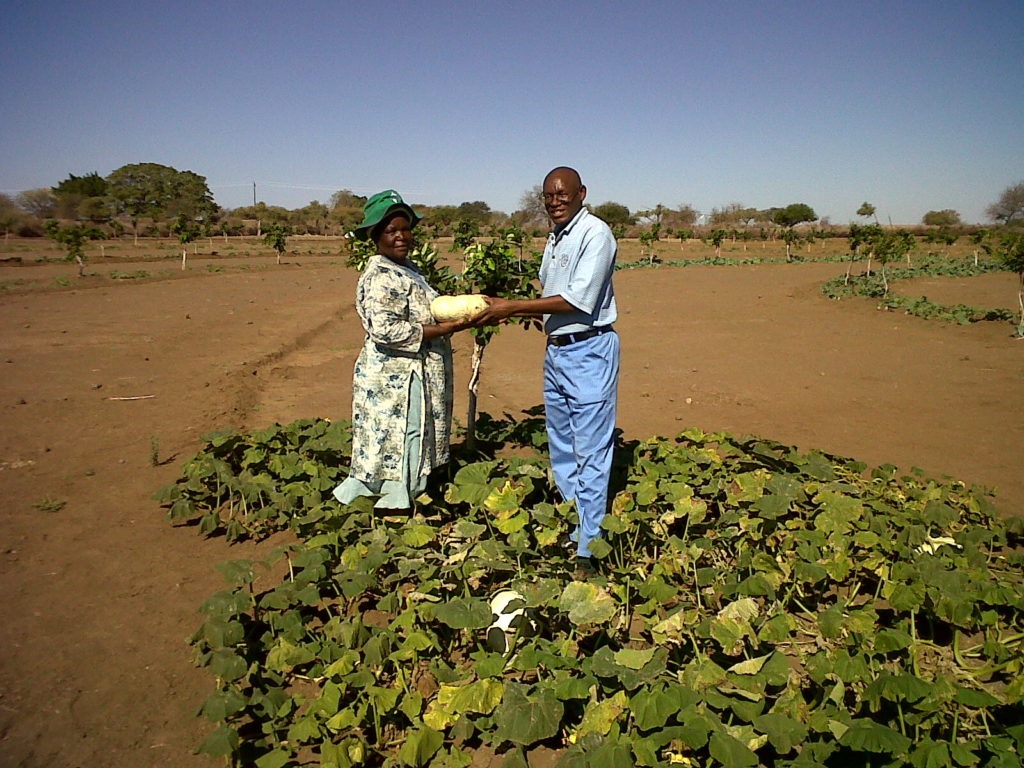FOCUS • ZIMBABWE

Navigating sustainable food security in the face of climate change
Despite regional challenges, Zimbabwe needs to recover its former condition as the bread basket of southern Africa, and become a nation capable of feeding its entire population
BY Moeti Dominic Maumbi | Farmer, Environment Activist, Pretoria
ZIMBABWE IS a landlocked country of about 16 million people, located in southern Africa. As in the Garden of Eden, it has vast and diverse natural resources, that God put under His children’s control (Genesis 1: 28). It has an agro-based economy that strongly relies on rain-fed agriculture, and is highly sensitive to the vagaries of nature. At independence in April 1980, the government of the Zimbabwe African National Union–Patriotic Front (ZANU–PF) put its thrust mostly on agricultural, educational, health, mining and infrastructural development. Donors and well-wishers from across the globe came and fully supported the nascent nation. Indeed, progress was bubbling and evident at both individual and societal levels. An air of hope, peace, unity, stability, tolerance (reconciliation) and prosperity enveloped the once divided nation. Great strides were made in agriculture, and Zimbabwe was referred to as the bread basket of southern Africa, from its consistent exports of cash and grain crops and livestock. In education, a compulsory primary and secondary education policy led to one of the most educated and literate populations in Africa; and equity in health and primary health care policy led to increased child survival rates and life expectancy.
Economic, political and social distress has consumed the nation
Today, Zimbabwe is a shell of its former self. Economic, political and social distress has consumed the nation. Climate change, environmental degradation and loss of diversity have compounded the mix of challenges that have brought general strife to its citizens. A strong agricultural support network—consisting of key government institutions; the academia; the private sector; farmer representative organizations; and the NGOs—all work collaboratively to improve agricultural production, and hence ensure food security and its sustainability.
Agro-ecological zones
The country is divided into agro-ecological zones, which combine similar soil, landform, climatic and vegetation constraints and potentials for sustainable land use. It is on this basis that recommendations for suitable agricultural production systems are made for each zone. The seven recently revised zones include the following:
Region 1 (with over 1000 mm of rainfall / year, low temperatures and steep slopes) is suitable for specialized agriculture;
Regions 2A and 2B (medium rainfall of 750–1000 mm /year, moderate temperatures and good soil), is suitable for intensive farming, including horticulture and dairying;
Region 3 (low rainfall of 650–800 mm/year, mid-season dry spells and high temperatures), is suitable for semi-intensive farming for field crops such as maize, soya beans, tobacco, cotton and livestock;
Region 4 (low rainfall of 450–650 mm/year, with severe dry spells during the rainy season and frequent seasonal droughts), is suitable for semi-extensive farming, including livestock and drought-tolerant crops such as sorghum, millet, cowpeas and groundnuts;

An estimated three million people may have needed humanitarian assistance for the period Jan.–Mar. 2022
Region 5A (very low rainfall of less than 650 mm/year and highly erratic) is suitable for extensive farming, including wild-life management, bee-keeping and non-timber products;
Region 5B (the driest part of less than 450 mm/year) is suitable for extensive farming only, and no rain-fed cropping.
Counteracting climate change
Climate change has been notable at the farmers’ level through variations in the onset and length of the rainy season, the amount and distribution of the rainfall throughout the entire growing season, increased temperatures, dry spells and incidences of droughts, floods and cyclones. Key decision-making and timing of production processes are important for effective and successful farming, and are affected by these changes.
Food security is said to exist when all people, at all times, have physical and economic access to sufficient, safe and nutritious food that meets their dietary needs and food preferences for an active and healthy life (World Food Summit 1996). These climatic changes ultimately impact negatively on the food production systems. Abject poverty, hunger, malnutrition, high unemployment, high inflation, displacement and political intolerance, have now become part of the vocabulary of conversations on Zimbabwe. An estimated three million people may have needed humanitarian assistance for the period Jan.–Mar. 2022.
(www.fews.net)

Zimbabwe has an extensive repository of technical knowledge and agricultural practices that have been effectively used in the past to mitigate against adverse weather, for example droughts, especially in drier and rapidly expanding marginal regions. Many appropriate agricultural intervention programmes to reduce the vulnerability to climate change have been introduced by various stakeholders, including the Government of Zimbabwe. Drought-tolerant crops (e.g. sorghum, millet, rapoko, cassava, sweet potatoes and yams) must be produced on a large scale to meet the country’s food requirements. Although maize has been the main staple diet, shifts to embrace other foods will be required by the general public.
Training farmers in conservation agriculture, incorporating minimum soil disturbance, maintaining permanent soil cover and crop rotations, all have the added benefit of increased yields, labour savings, improved soil health and its sustainability to hand over to future generations, even in the face of climate change. Introducing improved and diversified livestock production systems, plus building irrigation schemes, river catchment rehabilitation and restoration (from soil erosion and land degradation), will all ensure food security and ecosystem protection.
We need to use the land wisely and efficiently—then leave it in a better state for future generations to inherit, for their own sustainable use
In conclusion, a delicate balance must be struck between population growth, consumption patterns (including food), land availability and maintaining and sustaining healthy ecosystems. Climate change is here to stay, and so are we. Food is required for our sustenance yesterday, today and into the future. We need to use the land wisely and efficiently—then leave it in a better state for future generations to inherit, for their own sustainable use. Perhaps, in our life time, the phoenix of Zimbabwe will rise again to its former glory, and produce bumper food harvests and exports despite its current challenges. If our plans are aligned with God’s intentions, nothing is impossible, including restoration.
| Dates To Remember |
|
April 2 – World Autism Awareness Day 4 – International Day for Mine Awareness and Assistance in Mine Action 6 – International Day of Sport for Development and Peace 7 – International Day of Reflection on the 1994 Genocide in Rwanda 7 – World Health Day 15 – Good Friday 17 – Easter Sunday 21 – World Creativity and Innovation Day 22 – International Mother Earth Day 23 – English & Spanish Language Day 24 – International Day of Multilateralism and Diplomacy for Peace 25 – World Malaria Day 28 – World Day for Safety and Health at Work 30 – Our Lady, Mother of Africa 30 – International Jazz Day May 1 – St Joseph the Worker, Workers’ Day 3 – World Press Freedom Day 8 – Remembrance and Reconciliation for Victims of Second World War 8 – World Migratory Bird Day 15 – International Day of Families 17 – World Telecommunication and Information Society Day 20 – World Bee Day 21 – World Day for Cultural Diversity for Dialogue and Development 22 – International Day for Biological Diversity 29 – Ascension of the Lord 29 – International Day of UN Peacekeepers 30 – World No-Tobacco Day |
